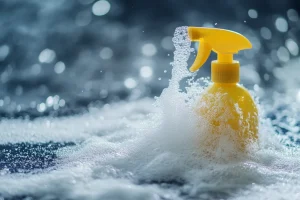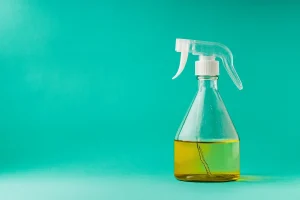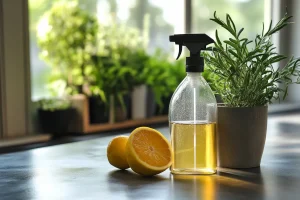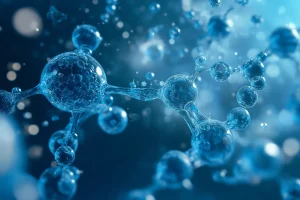I. Unlocking the Power of Enzyme Cleaners
In the ever-evolving world of cleaning products, enzyme cleaners represent a significant advancement, offering a targeted and often more sustainable approach compared to traditional chemical solutions. Frequently lauded for their remarkable ability to tackle stubborn organic messes – think persistent pet accidents, greasy kitchen spills, or set-in food stains – these cleaners operate on principles borrowed directly from nature.
They represent a specialized category of cleaning agents that leverage the power of biological catalysts to achieve results that often elude conventional methods. Unlike cleaners relying solely on surfactants to lift dirt or harsh chemicals to obliterate stains, enzyme cleaners employ specific biological molecules to dismantle unwanted organic matter at its source.
Contact us!
This guide provides a detailed exploration of enzyme cleaners, delving into the science that makes them work, their most effective applications, the advantages they offer, their inherent limitations, and ultimately, why sometimes the expertise of a professional cleaning service remains the best course of action. Understanding how these “smarter” cleaners function empowers users to choose the right products and employ them effectively for a truly deep clean.
II. The Science Behind the Clean: What Are Enzyme Cleaners?
The effectiveness of enzyme cleaners stems from fundamental biological processes. Their unique mechanism sets them apart from other cleaning agents, offering targeted action against specific types of soils.

A. Nature’s Tiny Cleaning Machines: Enzymes Explained
At their core, enzyme cleaners are formulations containing specific enzymes. Enzymes are specialized protein molecules produced by living organisms, such as bacteria and fungi, that act as biological catalysts. In nature, enzymes play crucial roles in countless biological reactions, including digestion, by dramatically speeding up the rate at which these reactions occur without being consumed in the process. In cleaning products, these enzymes are harnessed to accelerate the breakdown of complex organic stain molecules into simpler substances, making them easier to remove.
These biological powerhouses are typically derived from natural sources and selected for their ability to function effectively under various cleaning conditions.
B. The “Lock and Key” Mechanism: How Enzymes Target Stains
The true ingenuity of enzyme cleaners lies in their specificity. Enzymes operate via a mechanism often compared to a “lock and key”. Each enzyme type has a unique three-dimensional structure with an “active site” designed to bind only to a specific type of molecule, known as its substrate (the “lock”). For instance, a protease enzyme is shaped to bind specifically to protein molecules, while a lipase enzyme binds to lipids (fats).
Once the enzyme (the “key”) binds to its specific substrate (the stain molecule), it initiates a catalytic reaction that breaks down the complex substrate molecule into smaller, simpler, and typically water-soluble components.
These smaller pieces are then easily lifted and washed away during the cleaning process. This targeted breakdown is fundamentally different from how other cleaners work. Traditional detergents primarily use surfactants, which are molecules with water-attracting (hydrophilic) and oil-attracting (hydrophobic) ends. Surfactants work by surrounding dirt and grease particles, lifting them from surfaces and allowing them to be suspended in water and rinsed away.
They essentially relocate the soil. Bleach, another common cleaning agent, works through oxidation, chemically altering a broad range of molecules, which can sometimes damage the surface being cleaned.
Enzyme cleaners, in contrast, perform a chemical transformation, specifically dismantling the targeted stain molecules. This molecular disassembly is why enzyme cleaners can be exceptionally effective at completely eliminating stains and, crucially, the odors associated with organic matter, as they break down the actual source molecules.
C. Meet the Cleaning Crew: Common Enzymes and Their Jobs
 Most enzyme cleaning products contain a blend of enzymes to tackle a wider range of common household stains. Understanding the main types of enzymes and their specific targets helps in selecting the most effective product for a particular cleaning task:
Most enzyme cleaning products contain a blend of enzymes to tackle a wider range of common household stains. Understanding the main types of enzymes and their specific targets helps in selecting the most effective product for a particular cleaning task:
- Proteases: These enzymes break down protein-based stains. Proteins are complex molecules found in substances like blood, egg, milk, meat, grass, and bodily fluids (including components of urine and feces). Proteases dismantle these large protein molecules into smaller peptides, which are easier to remove. They are key ingredients in laundry detergents and pet stain removers.
- Lipases: Lipases target lipid-based (fat and oil) stains. This includes grease, butter, cooking oils, salad dressings, and some cosmetics. Lipases break down fats (triglycerides) into fatty acids and glycerol, making these greasy residues water-soluble or easier to emulsify. Detergents often combine proteases and lipases for broad-spectrum stain removal.
- Amylases: These enzymes specialize in breaking down starch-based (carbohydrate) stains. Common sources include pasta, rice, potatoes, cornstarch, gravy, and chocolate. Amylases hydrolyze the large starch molecules into smaller sugar units that readily dissolve in water.
- Cellulases: Cellulases break down cellulose, a complex carbohydrate found in plant cell walls. In laundry detergents, cellulases serve a unique purpose: they target and break down tiny, fuzzy microfibrils that form on the surface of cotton and cotton-blend fabrics through wear and washing. Removing these fibrils helps release trapped dirt, prevent pilling, restore color brightness, and soften fabrics. Some sources also mention related enzymes like xylanases for breaking down other plant-based materials.
- Ureases: Particularly important in pet stain and odor removers and restroom cleaners, ureases specifically target and break down urea. Urea is a major component of urine and a primary source of its persistent ammonia-like odor as it decomposes. By breaking down urea into ammonia and carbon dioxide, ureases directly eliminate the molecule responsible for much of the lingering smell, which is crucial for preventing pets from re-marking areas.
The effectiveness of any enzyme cleaner hinges on this principle of specificity – matching the right enzyme to the right type of organic soil. A cleaner rich in proteases will do little against a purely oil-based stain, and vice versa. This highlights the importance of choosing products formulated for the specific task at hand or opting for multi-enzyme formulas for general cleaning.
The following table summarizes the common enzymes found in cleaning products and their targets:
| Enzyme Type | Target Substance (Substrate) | Examples of Stains Targeted |
|---|---|---|
| Protease | Proteins | Blood, egg, grass, milk, meat, sweat, bodily fluids, feces |
| Lipase | Lipids (Fats & Oils) | Grease, butter, cooking oil, margarine, lipstick, oily sauces |
| Amylase | Starches (Carbohydrates) | Pasta, rice, potato, gravy, chocolate, baby food, cornstarch |
| Cellulase | Cellulose | Cotton fabric pills/fuzz, some plant-based stains (e.g., puree) |
| Urease | Urea | Urine (primary odor component) |
III. Everyday Uses: Where Enzyme Cleaners Shine
 The targeted action of enzymes makes them particularly well-suited for tackling a variety of common and often challenging cleaning tasks, primarily those involving organic soils. Their versatility stems directly from the fact that many difficult-to-remove household messes – from pet accidents to laundry stains – are organic in nature.
The targeted action of enzymes makes them particularly well-suited for tackling a variety of common and often challenging cleaning tasks, primarily those involving organic soils. Their versatility stems directly from the fact that many difficult-to-remove household messes – from pet accidents to laundry stains – are organic in nature.
A. Pet Stain & Odor Removal: Winning the Battle Against Accidents
Enzyme cleaners are widely considered the most effective solution for dealing with pet urine, feces, vomit, and other biological accidents. The reason lies in their ability to completely break down the complex organic molecules within these messes. Proteases attack the protein components, while ureases specifically neutralize the urea in urine.
This is critical because residual odor molecules, often undetectable to humans, can attract pets back to the same spot for repeat offenses. Traditional cleaners might remove the visible stain or temporarily mask the smell, but only enzyme cleaners effectively dismantle the underlying organic compounds, truly eliminating the stain and the odor source. They can be used effectively on carpets, upholstery, fabrics, and many types of flooring.
B. Laundry Boost: Tackling Tough Stains and Saving Energy
Enzymes have become standard ingredients in many modern laundry detergents and pre-treatment sprays for good reason. A cocktail of proteases, lipases, amylases, and sometimes cellulases works synergistically to break down a wide spectrum of common stains like grass, blood, grease, oil, chocolate, and starchy food residues. One of the most significant advantages of enzyme-based detergents is their effectiveness at lower wash temperatures, including cold water washes.
Since enzymes are biological catalysts, they don’t rely on high heat for activation, unlike traditional detergents that often need hot water to effectively dissolve greasy stains. Washing in cold water not only saves considerable energy (and money) associated with heating water but also helps preserve the color and integrity of delicate fabrics like wool and silk, which can be damaged by heat.
Cellulases further contribute to fabric care by removing fuzz and brightening colors. Enzyme cleaners can be applied as a pre-treatment directly to stains before washing or added directly to the laundry machine.
C. Drain Maintenance: Keeping Pipes Clear Naturally
Enzyme-based drain cleaners and maintainers offer a biologically driven alternative to harsh, corrosive chemical drain openers. These products typically contain enzymes and often beneficial bacteria that produce enzymes capable of breaking down common organic materials that clog pipes, such as grease, fats, oils, food particles, soap scum, and hair components.
For example, products like Hillyard’s Liquid Enzyme II contain live bacteria that continuously produce enzymes to dissolve waste. Unlike caustic chemical cleaners that work quickly but can damage plumbing, enzyme treatments work more slowly and are intended for regular maintenance to prevent buildup rather than clearing complete blockages instantly.
A unique benefit is their potential for continuous action; as long as moisture and organic matter (their food source) are present, the enzymes (or the bacteria producing them) can continue to work, breaking down deposits over time and helping to control odors emanating from drains and grease traps.
D. Carpet & Upholstery Spot Cleaning: Targeted Stain Removal
For organic spills like food, beverages, or bodily fluids on carpets and upholstery, enzyme spot cleaners are highly effective. Their ability to penetrate porous fibers and break down stain molecules at the source is particularly advantageous in these materials, where complete physical removal of the staining substance can be difficult. By dismantling the stain rather than just spreading it or pushing it deeper, enzyme cleaners can prevent recurring spots and associated odors, leaving fabrics cleaner and fresher.
IV. Why Choose Enzyme Cleaners? Key Advantages
 Enzyme cleaners offer a compelling set of benefits that make them an attractive choice for many cleaning challenges, aligning effectiveness with growing consumer demand for safer and more environmentally responsible products.
Enzyme cleaners offer a compelling set of benefits that make them an attractive choice for many cleaning challenges, aligning effectiveness with growing consumer demand for safer and more environmentally responsible products.
A. Unmatched Effectiveness on Organic Messes
The primary advantage of enzyme cleaners is their exceptional ability to break down and eliminate stubborn organic stains and odors that often resist conventional cleaning methods.
Their targeted molecular action ensures thorough removal, especially for protein- and urea-based messes like pet accidents. Furthermore, some enzyme cleaners, particularly those containing live bacteria, offer a unique “continuous cleaning action.” As long as conditions remain favorable (presence of moisture and organic matter), the enzymes can continue working long after application, progressively breaking down residual soil and providing prolonged odor control, which is particularly useful in areas like restrooms or around garbage containers.
B. Kinder to the Planet: Environmental Benefits
Enzymes themselves are proteins derived from natural sources and are readily biodegradable, meaning they break down naturally in the environment without causing pollution. This contrasts sharply with harsh synthetic chemicals found in many traditional cleaners. The use of enzymes has allowed detergent manufacturers to reduce reliance on environmentally taxing ingredients like phosphates and certain synthetic surfactants. Perhaps the most significant environmental benefit is the energy saving potential.
Because enzymes work efficiently in cold or cool water, they enable effective low-temperature laundry cycles, drastically reducing the energy needed to heat wash water. This shift towards colder washes aligns with broader sustainability efforts by reducing household energy consumption and carbon footprints. Historically, the introduction of enzymes even revolutionized industries like leather tanning, significantly reducing the use of hazardous chemicals and water pollution.
C. Generally Safer for Homes and Fabrics
Compared to cleaners based on strong acids, alkalis, bleach, or solvents, enzyme cleaners are typically much gentler and less corrosive. They are generally free from harsh chemicals, making them a safer option for use in homes with children and pets, provided they are used according to label directions. Their gentle action also makes them suitable for cleaning delicate fabrics that could be damaged by high temperatures or aggressive chemicals. While sensitivities can occur (discussed below), extensive testing has generally found laundry enzymes to pose a low risk for skin allergies or erosion when used correctly. This combination of high efficacy against specific targets coupled with a more favorable safety and environmental profile makes enzyme cleaners a versatile and responsible choice for many cleaning needs.
V. Know Before You Use: Limitations and Considerations
Despite their many advantages, enzyme cleaners are not a universal solution, and understanding their limitations is crucial for effective and safe use. These limitations often stem directly from the biological nature of the enzymes themselves.
A. Patience is Required: They Need Time to Work
 Enzymatic action is a biological process, not an instantaneous chemical reaction. Enzymes need time to bind to their substrate and catalyze the breakdown process. This means users must typically allow the cleaner to sit on the stain for a period, ranging from minutes to several hours or even overnight, often letting it air dry completely. They are not designed for quick wipe-and-go cleaning. For deeply set or very old stains, repeat applications may be necessary to achieve complete removal.
Enzymatic action is a biological process, not an instantaneous chemical reaction. Enzymes need time to bind to their substrate and catalyze the breakdown process. This means users must typically allow the cleaner to sit on the stain for a period, ranging from minutes to several hours or even overnight, often letting it air dry completely. They are not designed for quick wipe-and-go cleaning. For deeply set or very old stains, repeat applications may be necessary to achieve complete removal.
B. Specific Targets Only: Ineffective on Inorganic Dirt
The specificity that makes enzymes effective against organic matter is also a limitation. They are designed to break down proteins, fats, starches, cellulose, and urea. They have no effect on inorganic stains or soils, such as rust, hard water mineral deposits (limescale), ink (unless it has an organic binder), mud, clay, or synthetic chemical residues. For these types of cleaning tasks, different types of cleaners (e.g., acidic cleaners for mineral deposits, solvents for ink) are required.
C. Handle with Care: Temperature and Storage Sensitivity
Enzymes are sensitive to environmental conditions, particularly temperature. High heat can cause enzymes (which are proteins) to denature – lose their specific three-dimensional shape – rendering them inactive. Therefore, it is generally recommended to avoid using enzyme cleaners with very hot water, especially in laundry. Warm or cold water is usually optimal for their activity. Similarly, enzyme-containing products should be stored in cool, stable conditions away from direct sunlight or extreme heat to maintain their potency, as prolonged exposure to unfavorable conditions can degrade enzymatic activity over time.
D. Potential Sensitivities: Allergies and Irritation
Although generally considered safe, enzymes are proteins, and like other proteins (e.g., pollen, dust mites), they can potentially cause allergic reactions or irritation in sensitive individuals or pets. Skin irritation can occur, particularly with concentrated products or if residues are not thoroughly rinsed. Inhalation of aerosolized enzyme particles (from sprays) might trigger respiratory reactions in some pets or people. It is always wise to test the product on an inconspicuous area first, ensure good ventilation during use (especially when spraying), and keep pets away from the treated area until it is dry.
E. Surface Compatibility: Not for Everything
While enzyme cleaners are safe for many common household surfaces and fabrics, they may not be suitable for all materials. For example, they are generally not recommended for use on leather. Always check the product label for specific surface compatibility information and manufacturer recommendations. When in doubt, testing on a hidden spot is the safest approach.
F. Important Distinction: Cleaning vs. Disinfecting
This is a critical point often misunderstood. Enzyme cleaners excel at breaking down and removing organic soil and the sources of odors. However, they typically do not disinfect surfaces – meaning they do not kill bacteria, viruses, or other potentially harmful microorganisms. While removing the soil that harbors germs is a crucial first step in hygiene, if disinfection is required (e.g., after cleaning up raw meat spills, pet feces, or areas contaminated by illness), a separate step using an appropriate EPA-registered disinfectant product is necessary after the enzyme cleaner has worked and the area has been rinsed or wiped clean.
Assuming an area is sanitary simply because it looks clean after using an enzyme product can pose a health risk, especially when dealing with potentially infectious biological matter.
VI. Beyond DIY: When to Call a Professional Cleaning Service
 Enzyme cleaners are powerful tools for homeowners, but there are situations where their limitations are exceeded by the scale or complexity of the cleaning challenge, making professional intervention a wiser choice. Understanding when to call for expert help ensures the best possible outcome and prevents potential damage from inadequate DIY attempts.
Enzyme cleaners are powerful tools for homeowners, but there are situations where their limitations are exceeded by the scale or complexity of the cleaning challenge, making professional intervention a wiser choice. Understanding when to call for expert help ensures the best possible outcome and prevents potential damage from inadequate DIY attempts.
- Deeply Set or Large-Scale Stains: Stains that have penetrated deep into carpet padding, soaked through upholstery cushions, or cover a very large area can be extremely difficult to treat effectively with consumer-grade products and equipment. Professionals possess powerful hot water extraction machines, specialized tools, and potentially stronger or more varied treatment solutions to reach and remove contaminants that DIY methods cannot.
- Persistent or Pervasive Odors: If strong odors (especially pet urine odors) persist despite repeated and correct application of enzyme cleaners, it may indicate that the source is trapped deep within materials (subflooring, drywall) or requires more aggressive deodorization techniques. Professionals have access to technologies like ozone generators, hydroxyl radicals, or thermal fogging that can neutralize stubborn, deeply embedded odors.
- Need for Guaranteed Disinfection: In situations requiring confirmed sanitation, such as after a sewage backup, extensive mold growth, or significant contamination with potentially infectious biological material, professional services are essential. They follow established protocols using certified disinfectants and procedures to ensure the area is hygienically safe, addressing the critical gap left by enzyme cleaners which do not disinfect.
- Delicate, Expensive, or Unknown Materials: Attempting to clean delicate materials like silk rugs, certain types of wool upholstery, antique fabrics, or even materials like leather (which are unsuitable for enzyme cleaners ) carries a high risk of causing irreversible damage (e.g., color bleeding, fiber distortion, shrinkage). Professionals have the expertise to identify materials accurately and select the safest, most appropriate cleaning methods and chemistry.
- Time, Effort, and Complexity: Some cleaning jobs are simply too large, too complex, or require more time and physical effort than is practical for a homeowner. The extended dwell times needed for enzyme cleaners can make tackling large areas a multi-day project. Professionals can often achieve better results more efficiently due to their experience, equipment, and coordinated approach. They can assess the full scope of the problem, identify all contributing factors (e.g., multiple types of stains requiring different treatments), and implement a comprehensive cleaning plan that may incorporate enzyme treatments as one part of a larger strategy.
In conclusion, while enzyme cleaners offer remarkable benefits for tackling specific organic cleaning challenges safely and effectively, recognizing their limitations is key. For complex, severe, or sensitive cleaning situations, the specialized knowledge, equipment, and broader range of solutions available to professional cleaning services often provide a superior and more reliable result.




